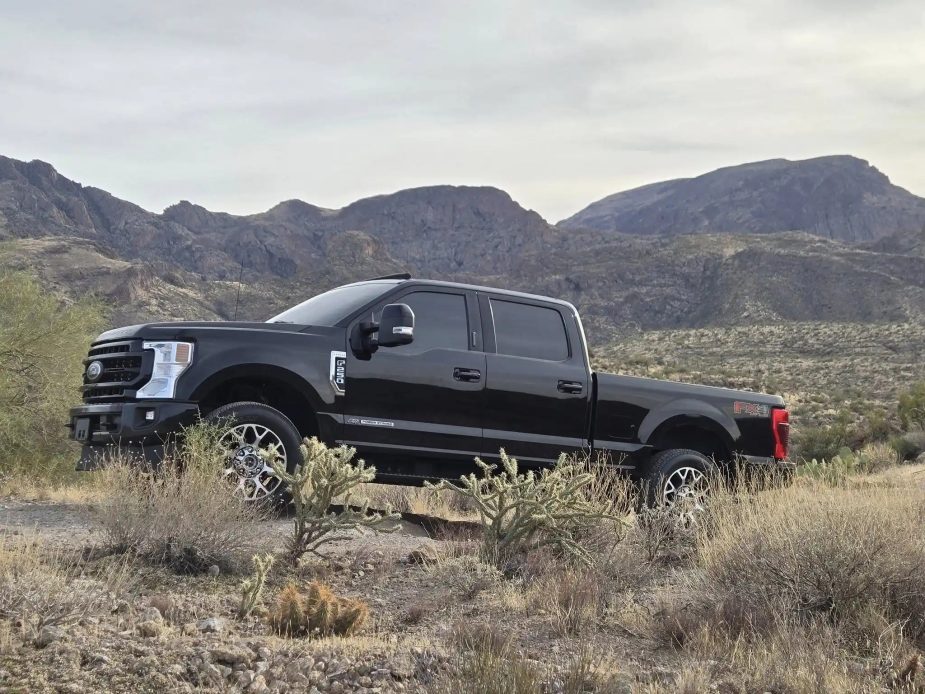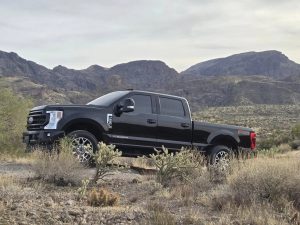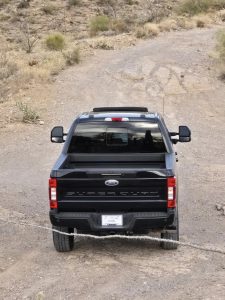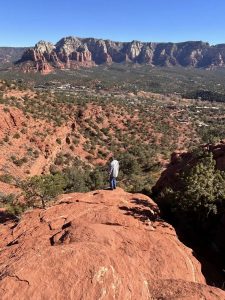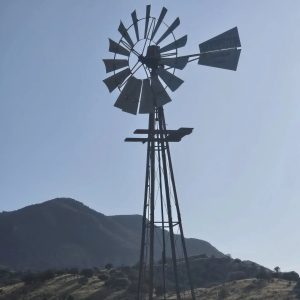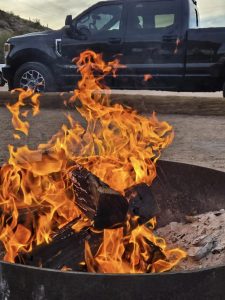I’m James Vozza, a SharePoint Developer supporting the TRADOC (Training and Doctrine Command) contract at Ft. Huachuca AZ, where I focus on customer support, developing apps and sites for The US Army Knowledge Management Program. Outside of work, I find adventure off the grid. Through AMSG’s Hobby Program—which encourages team members to explore and share the activities that bring us joy—I’ve had the opportunity to further pursue one of my favorite pastimes: four-wheeling across the desert.
One of my favorite pastimes is driving through our desert wilderness. Many times, it is an easy meandering unchallenging path. Other times there are obstacles such as washes, sand, large rocks or mud. The vehicle I use is a 4 wheel drive (4WD) Ford truck.
I use a 4WD truck because the features enable the truck to send power to any of the 4 wheels – depending on the situation you encounter. There are also ranges that can utilize extra low gearing to give a mechanical advantage and enable the vehicle to climb high grade angles or get through extra sticky or slippery terrain. Many trails have different options from easy to, challenging, to very difficult.
Many of today’s 4WD vehicles have very technologically advanced systems but most use a transfer case to enable power to the back wheels or all four wheels simultaneously. There are also devices that can lock the front or rear axles together, so power is sent to the tire with the most traction potential.
The use of a 4WD vehicle enables one to venture further off the beaten path and access many natural areas that are not as crowded as the ones that are more easily accessible. The hobby can get extreme. Choices of suspensions, tires, engine control modules, and self-recovery gear are endless. Many trails have technical aspects that are conquered by skill at operating the vehicle in austere conditions. Skills can be improved with practice and patience. Sometimes the price of unskilled driving or impatience can be severe, like blown tires, dented bodywork, or accidental collisions.
Vehicle recovery can be a large part of the sport. Once a vehicle is “stuck” an operator can either try to drive out or self-recover using chains, straps, shackles, or winches. Another option can be to recover one vehicle with another. There are great options including kinetic straps that flex like a rubber band and use the power of elasticity to help recover. It is always a good idea to travel trails with a team, a few vehicles together. If you go trail riding alone always make sure someone knows where you are heading and what time you plan to be home. Emergency kits with water, first aid supplies, and comfort supplies are usually a good idea.
Using 4WD vehicles to get out into the boonies can provide the driver and passenger with many beautiful vistas and experiences. An important idea in wilderness travel is to leave as little impact as possible. Don’t destroy the environment, pack out your trash, and be gentle with the natural world. In my adventures I have seen flora and fauna, historic trails, and national wilderness treasures. It has enabled me to gather foodstuffs that are not available in many grocery stores. I have taken some incredible pictures. I have also had wonderful adventures and memories with friends and family.
If you get the chance to take a 4wd tour, or if you have a 4wd in the driveway that never gets used, challenge yourself to take a few trails – you’ll be happy you did. That little 4WD dial on the dash can open up a wonderful new world.
- A black pickup truck parked on a dirt path with mountains in the background.
- A black Ford Super Duty pickup truck is parked on a dirt road.
- A person stands on a red rock formation, observing a panoramic view of a valley and distant mountains
- A metal windmill stands against a clear sky with mountains in the background.
- A bonfire burns brightly in a metal pit, with a black pickup truck visible in the background.
Written by: James “Jim” Vozza

